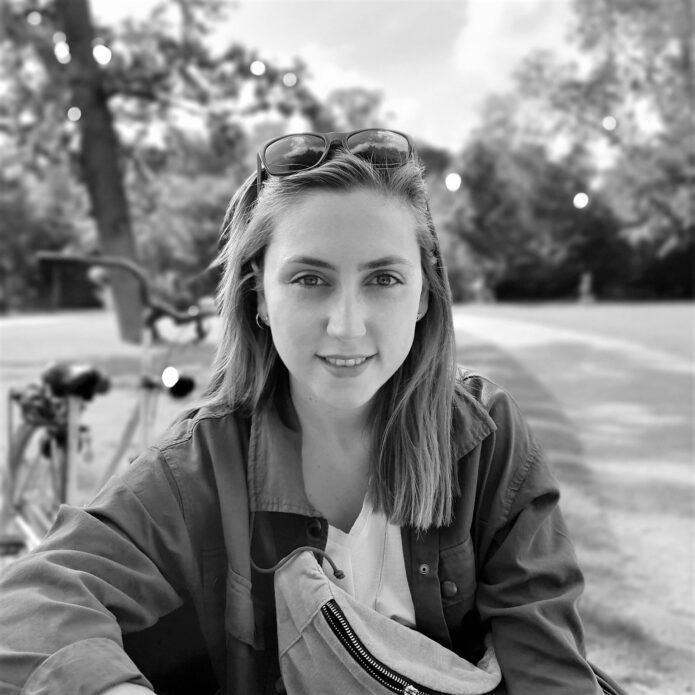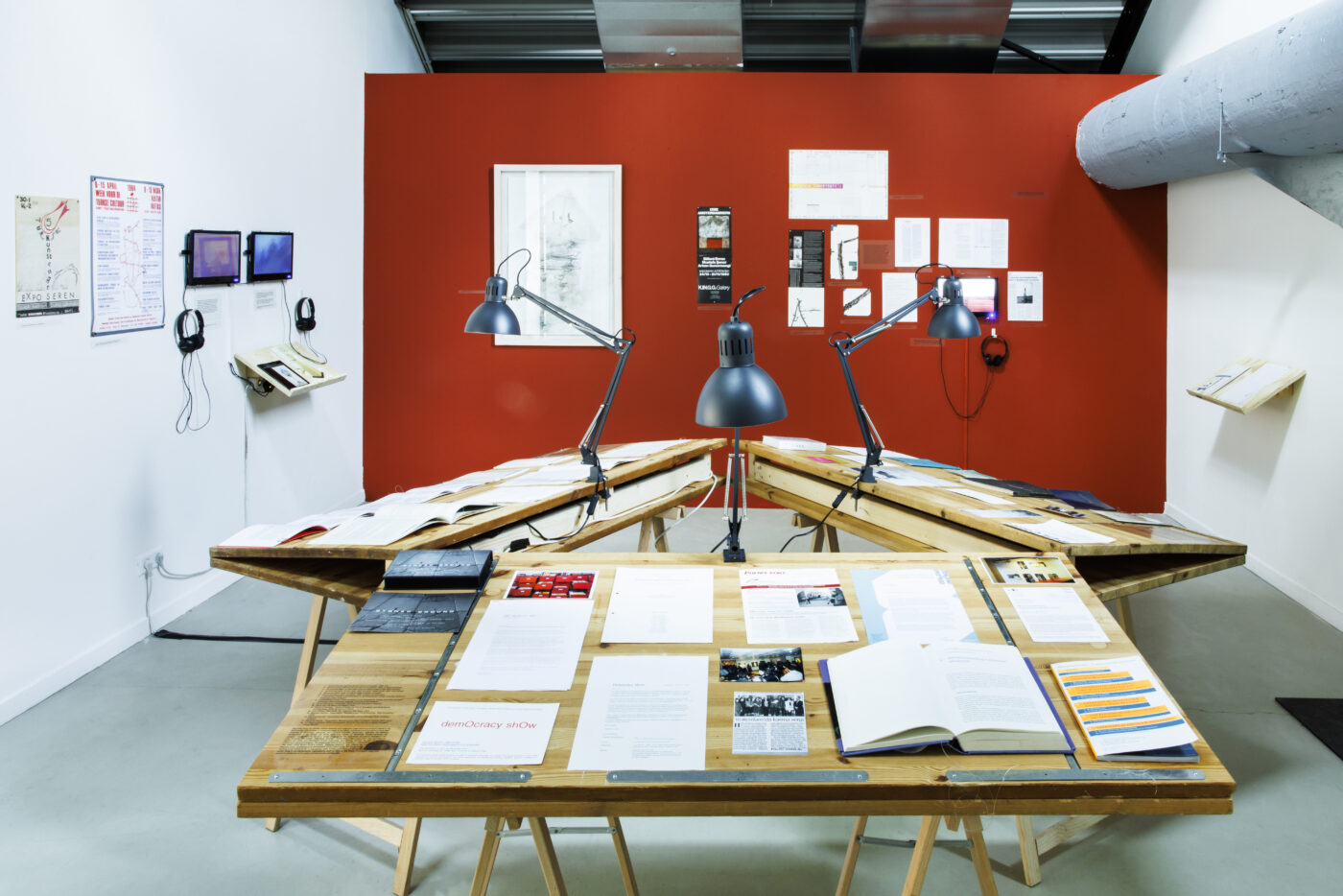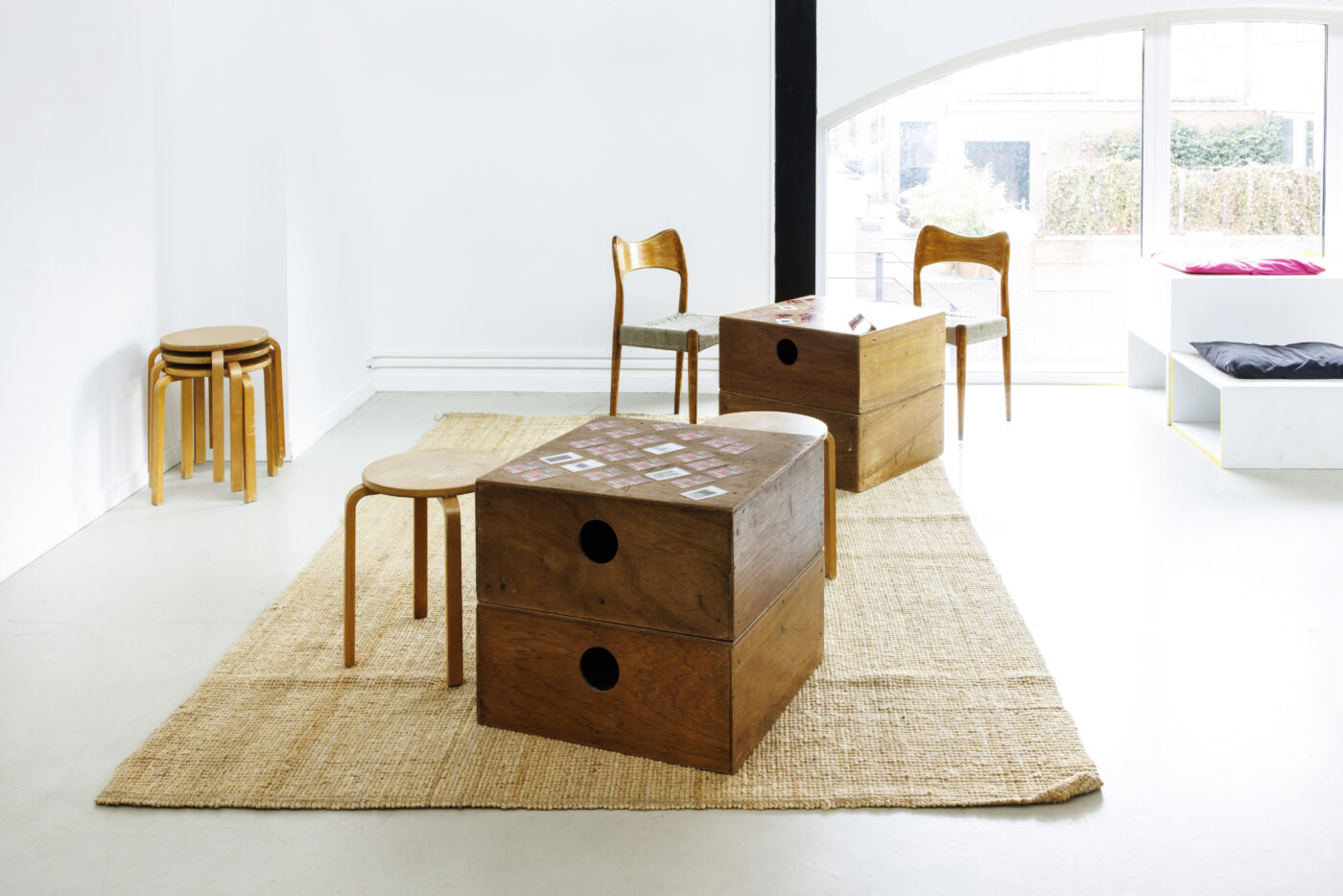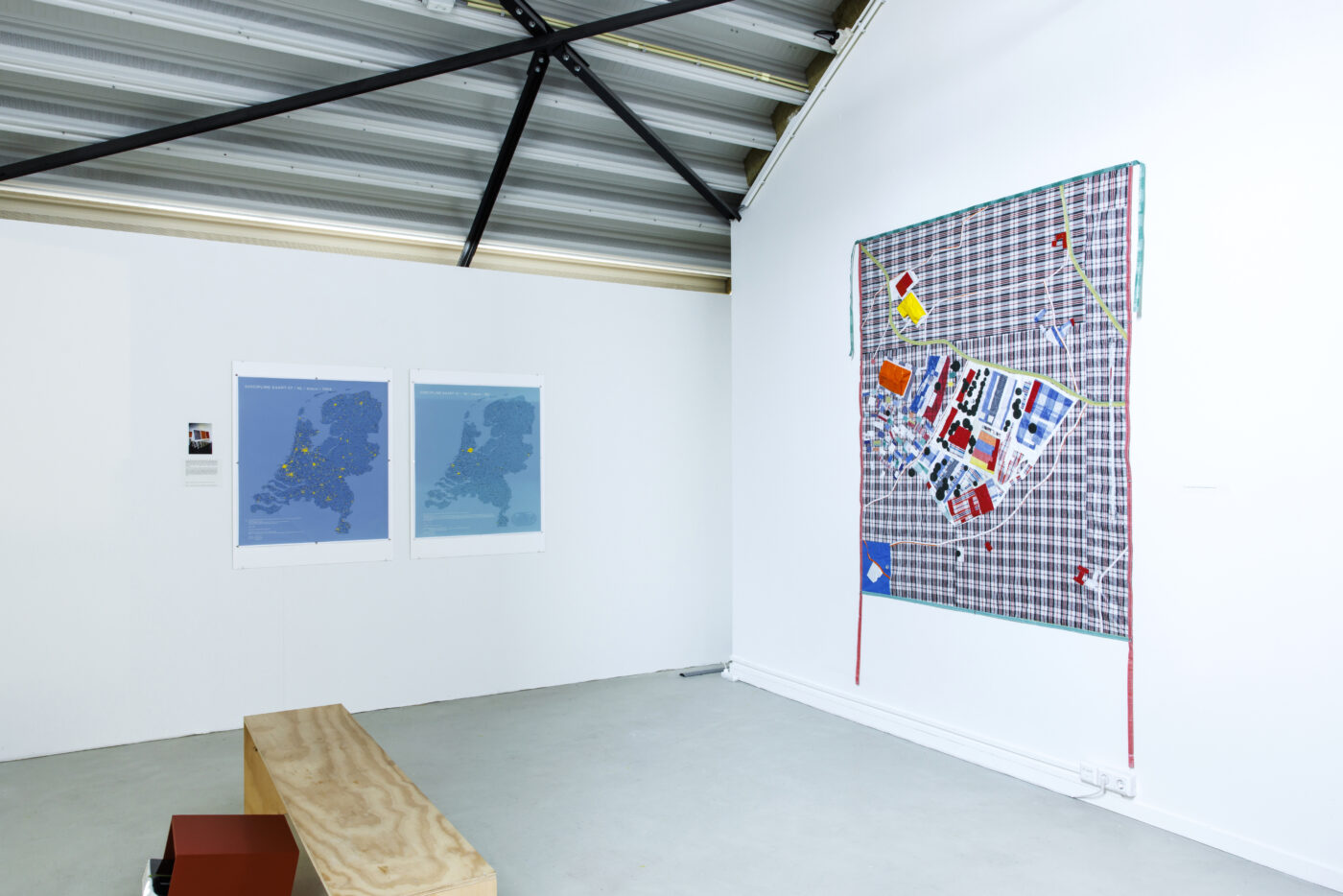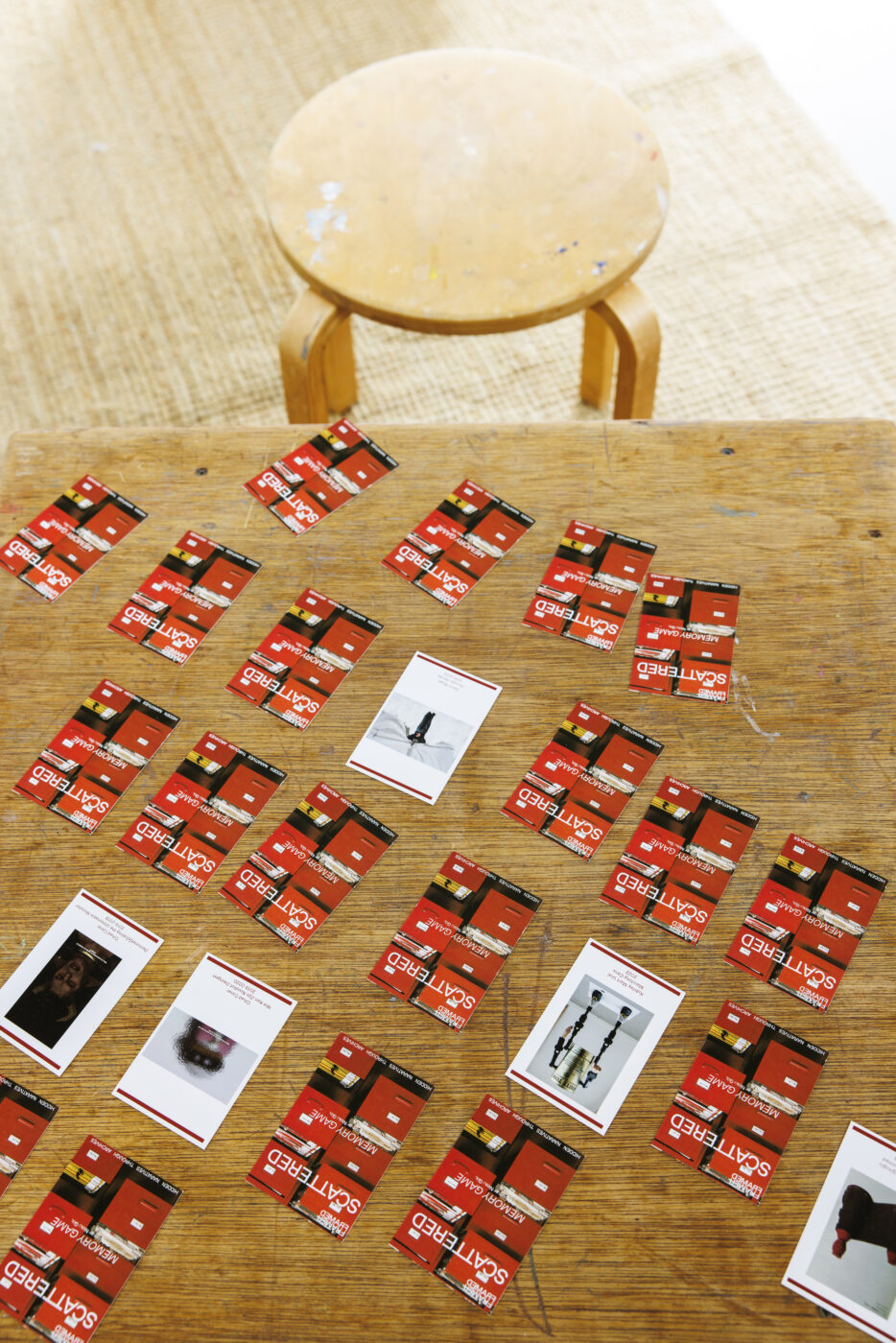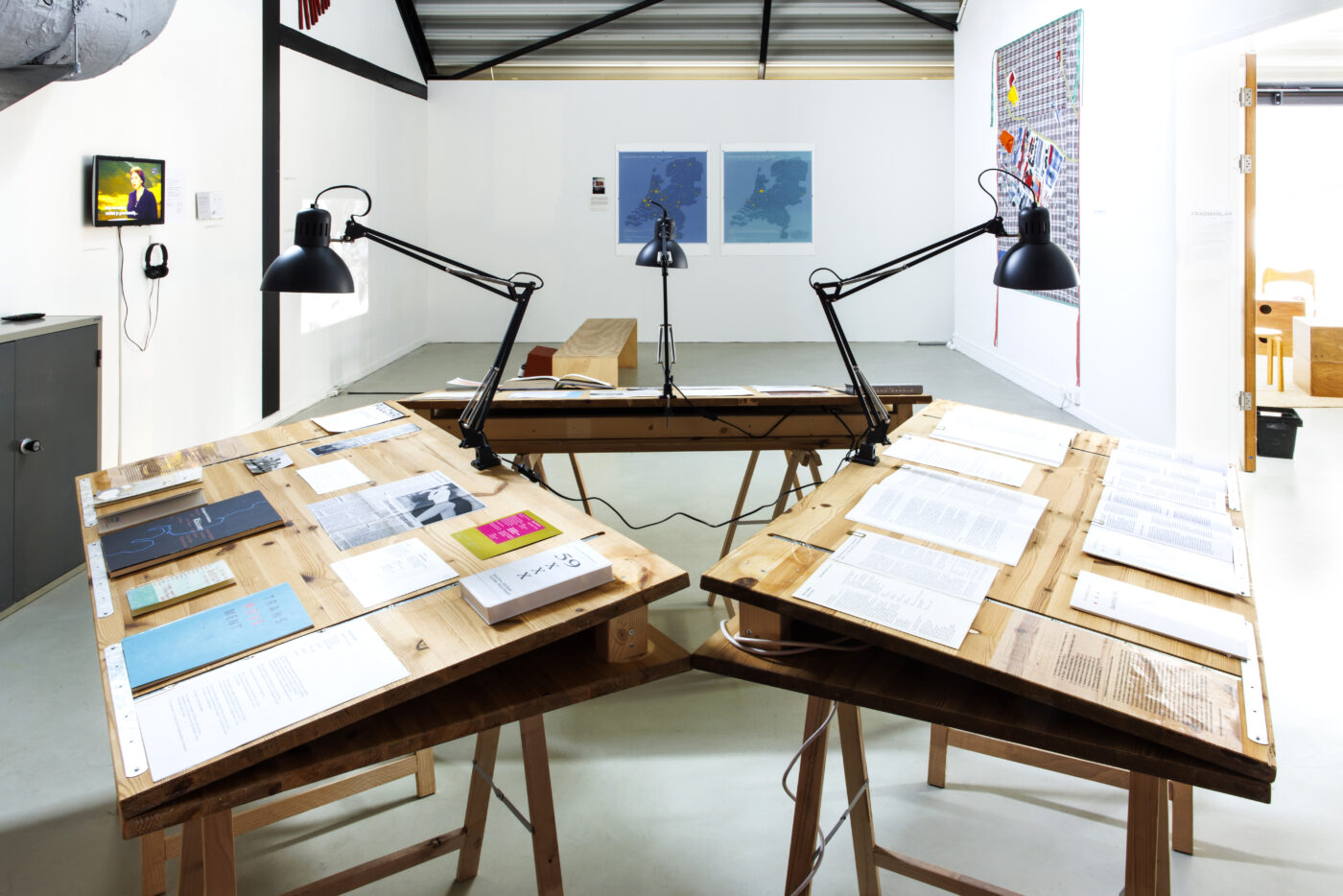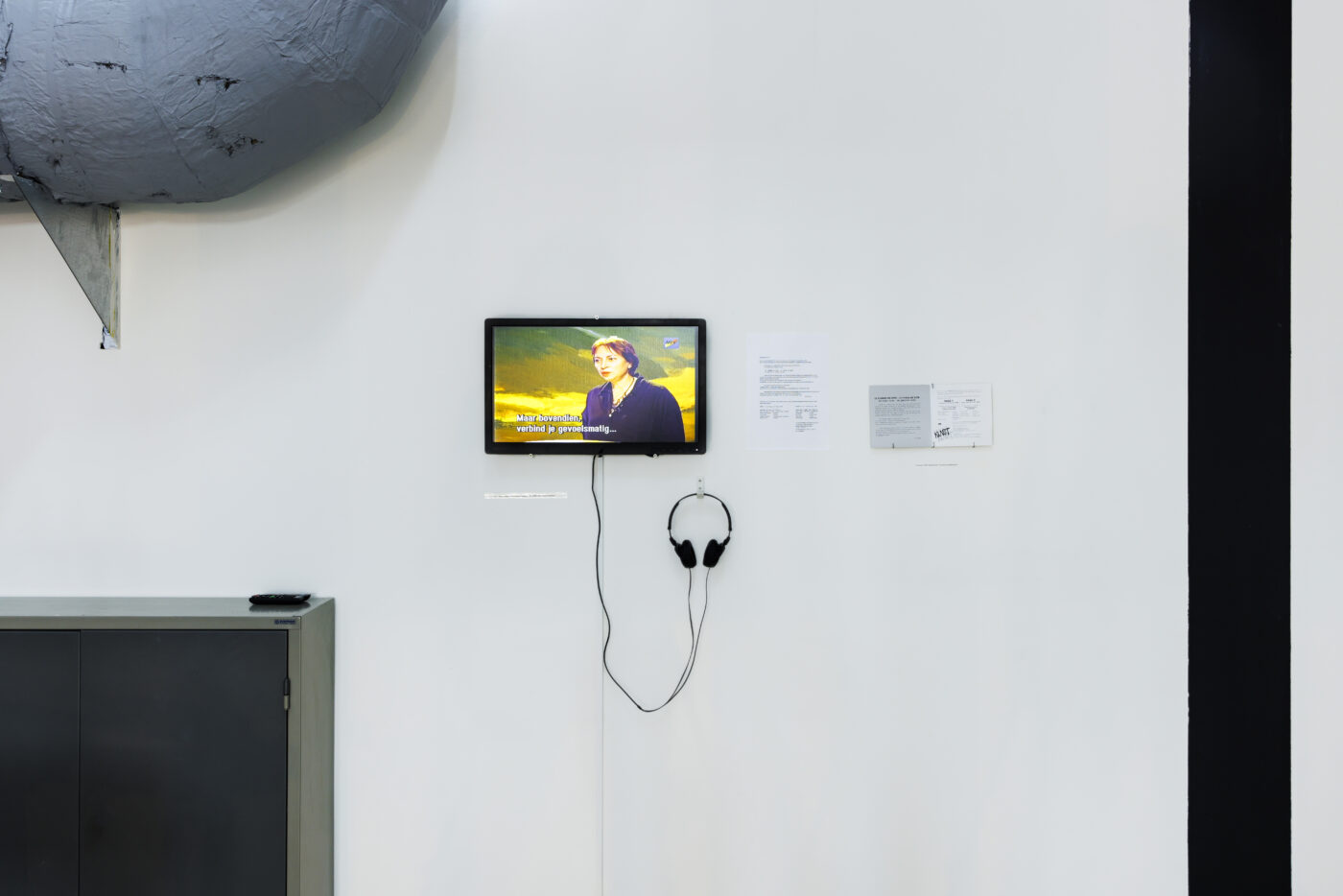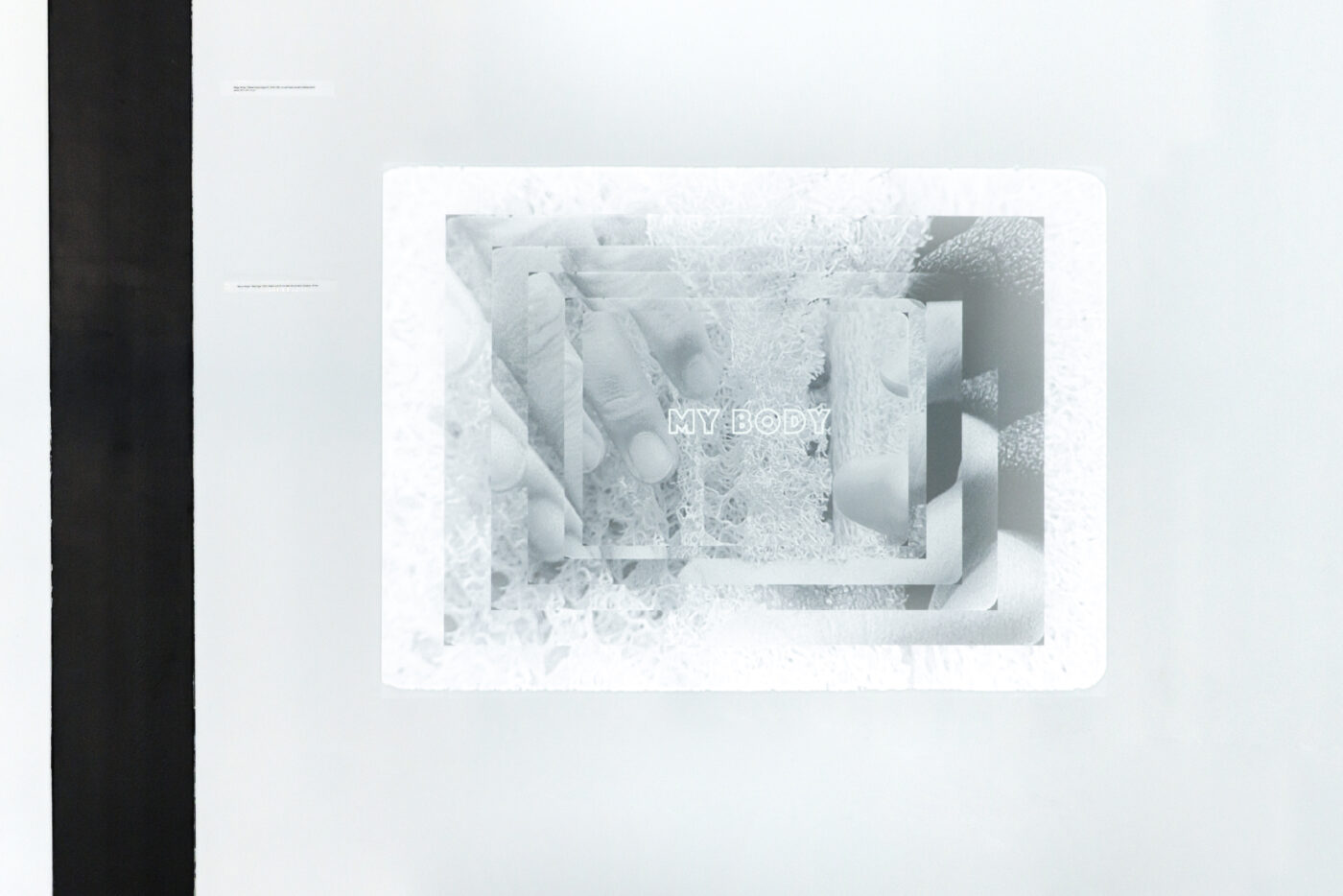Interview with researcher Nesli Gül Durukan on her exhibition Scattered - Hidden Narratives through Archives
Text by Mehmet Sülek for Invisible Culture Journal.
December 2023
1. As a Turkish researcher in the Netherlands, I am fascinated by this project to see how Turkish artists have been active and become an important factor in the Dutch art scene. How did this project emerge?
When this research was not yet on the agenda, there was an idea to make an exhibition. The idea was to reflect on the experiences of artists from Turkey who settled in the Netherlands and their individual and collective memories by focusing on displacement, rerouting, and mobility. I intended to bring visual artists together and their explorations in art. However, reaching out to these artists was not easy. I knew some of them, of course, since they are from my generation. But there is still a generational gap between artists from older generations. I decided to interview some of the artists to exchange some ideas and I also contacted artist Bülent Evren who mentioned his own archive in our first meeting. My encounter with his archive was a turning point because I was not aware of artists from older generations. For this reason, I decided to study the archive as it is filling a gap between artists from the older generation of artists and the current generation of artists. I later realized that there was a generational gap in this area. So even though many artists were invited to the academies here and decided to settle here, the impact of these artists on the Dutch art ecosystem has not yet been documented. Furthermore, there is also little research on the practices of artists of the previous generation. After I spent some amount of time with the archive, researching this history rather than just creating an exhibition became more important. The reason I initiated this research is twofold. Firstly, the existing research was limited. There was a lack of comprehensive research on the topic and artists after the year 2000. Secondly, the information in the Netherlands was fragmented. It was challenging to access information about the activities of artists from Turkey working in the Netherlands.
- 2. In relation to the first question, I am also curious about how your position as a researcher and curator originally from Turkey shapes your understanding and the way of looking at these artists in the Netherlands.
Coming from the same geography and culture and living together in a different geography are things that make it easier to analyze the references behind artistic practices. We undergo similar processes and encounter comparable experiences in various ways. Also, it takes time to understand where we live, what kind of experience we get, and what we learn from each other. In this regard, some issues come into prominence in time, like the issues that directly concern artists due to their position, such as cultural heritage, migration, and memory. For instance, the understanding of preserving and interpreting the tangible or intangible culture for the future as seen in Müge Yılmaz’s Eleven Suns (Gyps II) (2019) and Ishtar and Apkallu (2022) or the position of the women artist in society in relation to traditional family structures and migration query in Merve Kılıçer’s Nest Egg (2021), stems from the existing culture in Turkey.
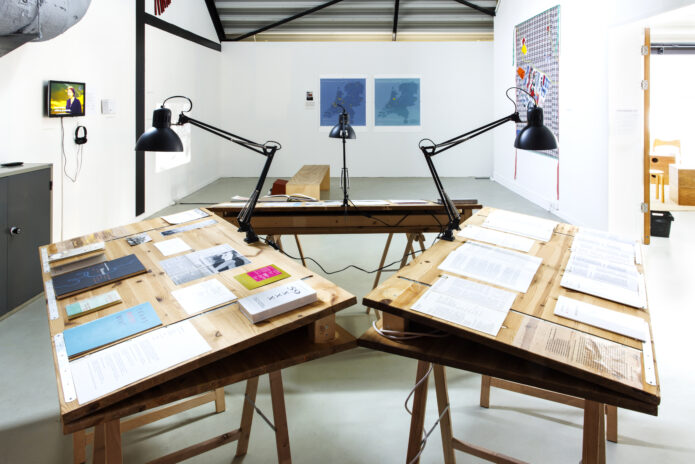
Installation photo from the exhibition Scattered (2023) curated by Nesli Gül at Framer Framed, Amsterdam. Photo: © Eva Broekema / Framer Framed
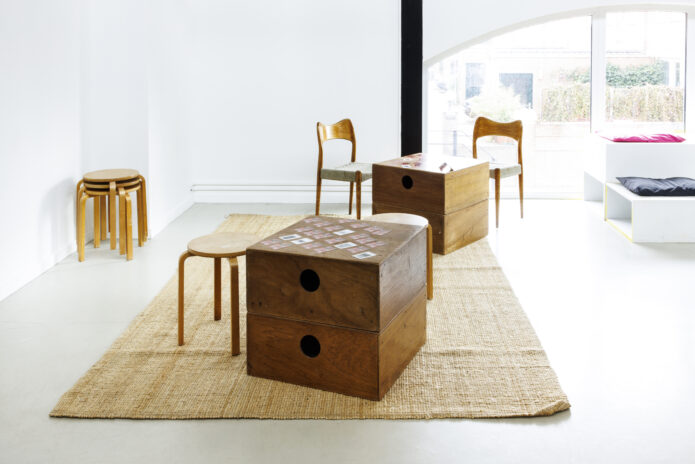
Installation photo from the exhibition Scattered (2023) curated by Nesli Gül at Framer Framed, Amsterdam. Photo: © Eva Broekema / Framer Framed
- 3. Seeing the exhibition sparked my interest in the changes in the practices of these artists when they settled in the Netherlands. Is there a difference between before and after they settled in the country?
One of the artists in this exhibition could be a good example, answer to this question as she makes it visible how her practices changed after she moved to the Netherlands. There is an interview with Nuray Ataş which can be found in Beeld En Geluid (Netherlands Institute for Sound and Vision). Atas says that when she moved to the Netherlands, she was planning to improve her artistic practice. This was the primary reason why she moved to the Netherlands. But after she moved here, she realized that the Turkish community faces many challenges in the Netherlands. After seeing this, she decided to reflect on the Turkish community’s challenge, their lifestyle, and how Dutch society sees this community in her paintings. She clearly states how her practice changed after settled in the Netherlands. Although she uses the geometric or nonobjective expressionist elements of abstract art, she displays some key moments of the Turkish community in the Netherlands. Therefore, besides art education, the agenda and issues of the geography of the place you live in are starting to affect the practice of art. At least that’s how it works for some artists.
4. This answer made me wonder if there is any difference between these artists who came from different generations as your exhibition put forward the practices of the Turkish artists from the 1970s until today.
Some artists make this change more visible while others don’t. For example, Esma Yiğitoğlu moved here while she was very young to study art. She built her artistic career here. This is also the same for Bülent Evren. Mustafa Sener and Işık Tüzüner demonstrated this change when they first studied at the Mimar Sinan Güzel Sanatlar Üniversitesi (Mimar Sinan Fine Arts University) in Istanbul. But again, they found their way. Turkish community here does not affect all artists, some motives are entirely personal and depend on their interests. Sener produces abstract paintings and Tüzüner works with recycled materials besides various kinds of materials. And when you think about the younger generation, some of them were accepted by Rijksakademie van Beeldende Kunsten, they were residents there. Rijksakademie is a very experimental academy, unlike its older days. It was pretty much focused on classical education until the 1980s. Today, they have changed their policy. This certainly affects the practices of young artists. For example, Ahmet Öğüt, Müge Yilmaz, Kubilay Mert Ural, Cihad Caner, or others who were part of the academy sought to use different types of materials and concepts. They are artists who push their limits and the boundaries of materials and concepts.
- 5. Do you think these artists can survive in the Dutch art scene beyond their Turkish identity? I am asking this question because of a very peculiar anecdote that I heard from a Chinese artist who was asked a very whimsical question by a curator: “Is your art Chinese enough?” Do you think Turkish artists feel the urge to be Turkish in the local Dutch art scene to be visible?
The process of formation of Turkish diasporas in the Netherlands is based on the 1960s, the year the government invited guest workers from Turkey and other countries such as Morocco, Spain, or Italy. This is how the story begins. During that time, encouragement for integration was out of the question because those who came from Turkey were treated as temporary workers. There was a policy of preserving Turkish culture and language, as they would return to their home country someday. In the following years (the 1980s), a minority policy was prepared for the minorities, as guest workers, who started to stay. The concept of integration in this policy was based on the preservation of one’s own cultural identity. This policy promoted the creation of distinct artistic spaces for various ethnic groups. Organizations such as Amsterdamse Kunstraad (Amsterdam Art Council) began to set up separate budgets for artists who migrated from other countries, such as Surinamese, Antilleans, Turks, Moroccans, and Southern Europeans. They formed the committee of Allochtonen Kunstenaars (immigrant artists) to receive applications and evaluate separately for the funds. But when we look at it today, there are no more such distinguishing labels both in media and institutions. In the 1990s, immigrant artists were encouraged to participate in Dutch society rather than to preserve their ethnic identities. There is no such thing as you can or cannot be part of Dutch art society because of your identity today. The conjecture of today is quite different than older times. Also, the artistic vision and perspectives are quite important as many of them focus on where they work and live instead of reflecting on their ethnicity. Today, it is concerned with how you locate yourself as an artist in the local or international art scene.
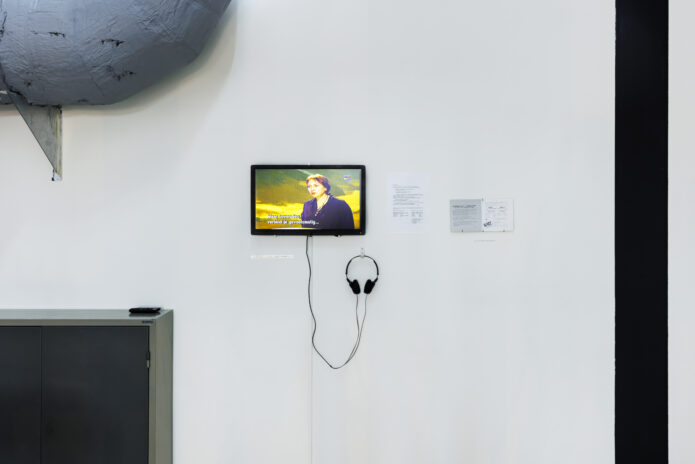
Installation photo from the exhibition Scattered (2023) curated by Nesli Gül at Framer Framed, Amsterdam. Photo: © Eva Broekema / Framer Framed
- 6. How did you choose the artists in the exhibition Scattered: Hidden Narratives through Archives at Framer Framed? Was the question of generation a factor for you?
The important thing was to present research findings based on archival materials by giving space to artists from different generations. Because of the limits of the space and facilities at Framer Framed, you could not give space to all artists. It is also not realistic, and the idea was not to show all of them. I showed an artist from each generation. When I chose them, I focused on the period but also their distinctive style of practices, and how they reflected the current issues of that period. Esma Yiğitoğlu, for example, makes social issues from the Netherlands and cultural references from Turkey she uses from the period visible. In her work which was displayed in the exhibition, there was a Muska (a triangular Turkish amulet containing a protective Koranic text). Although her work looks abstract, the work is about an amulet and numbers. She uses numbers that emerged from her interactions with immigrant Turkish women in Rotterdam. This is a work that came out of her educational involvement with the Turkish community to read and write. She also did some interviews with them to understand how writings, letters, and numbers appear to you if you are not literate. One of them says, for example, “It is black for me.” If you want to understand this work, you should, of course, understand the history and challenges behind it. You should know the history of the Turkish community here. It was important to make this work part of the exhibition. The work was produced in 1983 and in that period, it was clear that guest workers, at least some of them, decided to stay in the Netherlands. It is important to understand how they choose to communicate with society in the country. Yiğitoğlu’s work is unique in demonstrating the position of the Turkish diaspora in that period. Servet Koçyiğit focuses on a more global issue of refugees. In the exhibition, he depicts Camp Mória, a very large refugee camp on a Greek island in the northern Aegean Sea off the coast of Turkey. Koçyiğit used material that’s also quite intriguing. He uses a tote bag commonly used by immigrants, and it is known by different names in different countries. He used this material as part of his artistic practice. This work also portrays the bird eye view of Camp Mória. He started the work during the pandemic. For eight years, he worked with different ideas of mapping systems. It is also important to see how an artist from Turkey is concerned with global issues and take them to their agenda. I wanted to show artists are not only interested in their community but also in personal, social, or global issues. This was the reason why I gave space to Koçyiğit’s work as one of the art discusses urgent issues of contemporary art, as in the works of Müge Yılmaz and Merve Kılıçer. Increasingly emerging issues are important to us and to the next generation. Works reflect the issues that are urgent for current time from a personal or collective perspective. That’s why they come together.Both Müge and Merve work on preservation in different ways. Müge Yilmaz focused on the first human settlements in Anatolia. She researched Göbekli Tepe and Çatalhöyük. She reflects on her practices by using different materials. Merve Kılıçer’s work is more personal when we compare her to Yılmaz whose work is concerned with collective memory. It is also quite interesting. Her film Nest Egg (2021) focuses on how and why she decided to freeze her oeuvres. The film documents the artist’s personal experience with human oocyte cryopreservation (egg freezing) in the Netherlands, where the procedure is more accessible due to less restrictive laws compared to her home country, Turkey. When she moved to the Netherlands, she decided to do this work. More importantly, she shows us how a woman artist builds a career between a number of choices and roles in society.
- 7. Are these artists known in Turkey because they are in a difficult situation between the two countries?
These artists are not widely recognized, particularly the first generation among them. In fact, the reason for doing this research stems from there. It sheds light on a little-known and undocumented part of Dutch contemporary art history. While some have been active within Turkey and have collaborated with Turkish galleries, like Mustafa Şener, and Işik Tüzüner also engaged in the Turkish art scene, they remain relatively obscure today. Because of their age and trends in art, and also living in the Netherlands, they are not known well and are not part of the history of Turkish art. This is a problem for an artist when you move to another country. There is a risk; you are always in between two different countries. This is the main problem. Of course, there are artists who get over this situation, such as Ahmet Öğüt or Servet Koçyiğit.

Installation photo from the exhibition Scattered (2023) curated by Nesli Gül at Framer Framed, Amsterdam. Photo: © Eva Broekema / Framer Framed
- 8. What were the difficulties that you faced when you were preparing this exhibition?
As previously discussed, the information I needed was quite fragmented and dispersed. I conducted research across multiple institutions and found interviews to be particularly valuable in uncovering accurate details within archives and institutions. However, it was challenging. And the other issue was reaching out to the institutions’ archives during the pandemic. It was not easy to reach. Of course, there is no guarantee that you will reach every material. It also depends on what each institution is willing to share.
- 9. It seems that Bülent Evren’s archive played an important role in the exhibition. How did your collaboration with him grow?
I took Bülent’s archive as a starting point for my research. After the first encounter with his archive and having conversations about the materials, I embarked on the research in his studio by focusing on the limitations and scope of the research. I checked the relevant materials in his archive. When I went to his studio, he gave me some information about materials and the ideas behind them. Those materials were related to the first generation of immigrant artists in the Netherlands, such as the exhibitions they held together and his own activities. His archive shows the activities of artists of a certain period, but it alone does not provide a comprehensive understanding of the broader context. It constitutes a part of a larger research undertaking and gains meaning in relation to the archives in other institutions.
10. Why do you think that it is important to look at these artists as Turkish artists when they are connected to the local scene? How does recognizing this changes the narratives of the Dutch art scene?
I do not say Turkish artists but artists from Turkey to be more inclusive. People from different ethnicities also fall under the category of artists from Turkey. I prefer a geographical understanding of Turkey that encompasses many different ethnicities. By looking at these artists along with other artists and how they are positioned in the art scene, we can understand how the Dutch art scene has been changing over time. This is quite important to understand the history of artistic practice as well by taking into account the interactions with artists from different cultures in the Netherlands. By examining these artists’ diverse backgrounds and their positioning within the art scene, we gain insights into the evolving nature of the Dutch artistic landscape. This is also the reason why I seek to publish a book on this subject matter to demonstrate what kind of policies and challenges these artists have encountered in the country. This endeavor aims to shed light on the challenges these artists have been navigating, contributing to a more nuanced understanding of their contributions and impact on the Dutch art scene.
- 11. Finally, what are your future plans for this project?
I would like to display this exhibition in Istanbul. But maybe in a different concept and formulation. I do not know yet. It depends on the institution where this exhibition will be displayed. It is also possible to display this exhibition in a different city in the Netherlands. And the publication of this research is quite important. Also, I do not want to limit this research to the Dutch context but enlarge my scope to Europe as a whole.
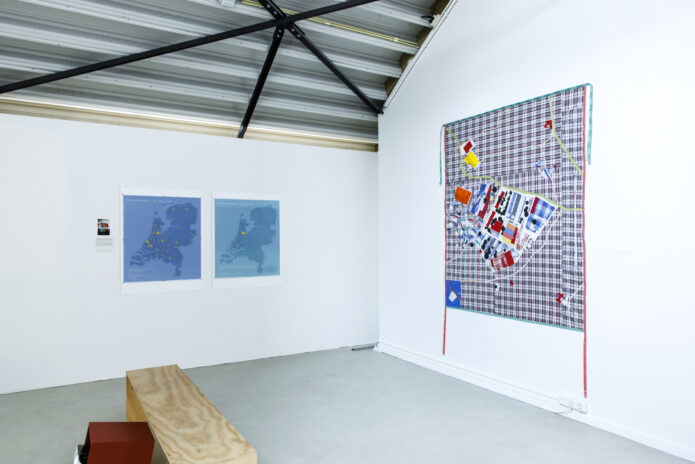

Installation photo from the exhibition Scattered (2023) curated by Nesli Gül at Framer Framed, Amsterdam. Photo: © Eva Broekema / Framer Framed
Tekst: Mehmet Sülek
23 December 2023
Republished from Invisible Culture: A Journal for Visual Culture with Creatives Commons License (CC-BY-4.0)
Diaspora / Global Art History / The living archive / Migration / Turkey /
Exhibitions
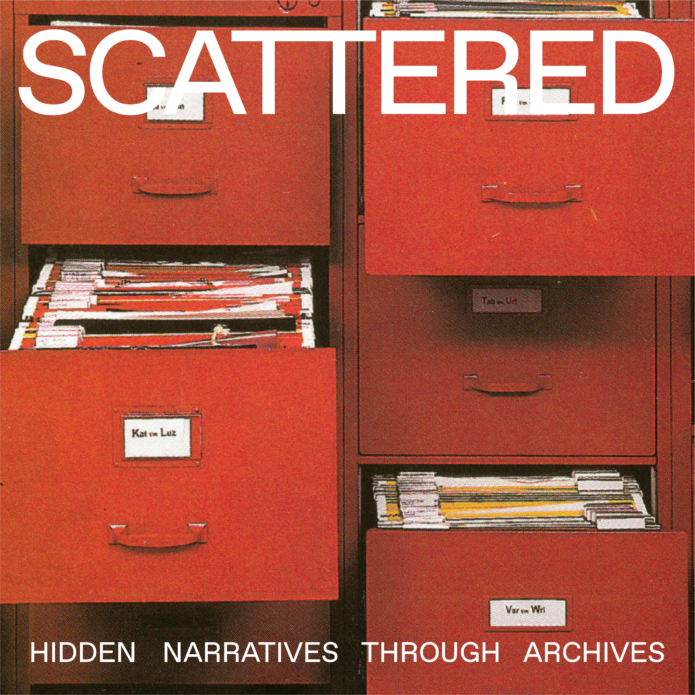
Exhibition: Scattered - Hidden Narratives through Archives
An exhibition featuring visual artists from Turkey who settled in the Netherlands and their presence in the Dutch Art Ecosystem
Network
